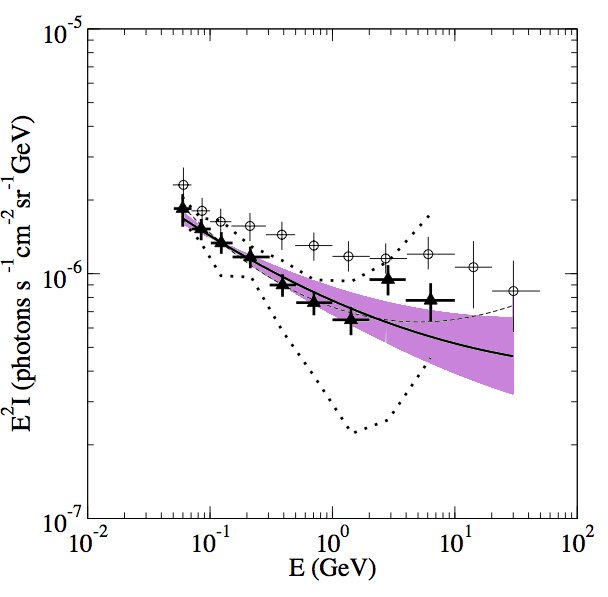|
|
The spectral shape of the blazar contribution to the gamma-ray backgroundThe spectral shape of the unresolved emission from different classes of gamma-ray emitters can be used to disentangle the contributions from these populations to the extragalactic gamma-ray background (EGRB). In the case of blazars which, in the GeV energy range (relevant to EGRET and GLAST) have spectra which can be described as power-laws, this spectral shape depends critically on the distribution of spectral indices of the unresolved sources. However, it is rather complicated to derive this distribution from observations. Even under the assumption that unresolved blazars have the same distribution of spectral indices as resolved blazars, one has to carefully account for the large and unequal uncertainties in measuring spectral indices for individual sources using the (few) photons detected from each. We have calculated the unabsorbed spectral shape of the unresolved blazar contribution to the EGRB starting from the spectral index distribution (SID) of resolved EGRET blazars derived through a maximum-likelihood analysis accounting for measurement errors. In addition, we have explicitly calculated the uncertainty in this theoretically predicted spectral shape. Whenever power-law energy spectra are coadded from sources with a variety of spectral indices, a convex colelctive spectrum results, with the degree of concavity depending on the spread of the spectral index distribution. In the case of blazars, we found that the unresolved emission spectrum is only mildly convex, and thus, even if blazars are shown by GLAST to be a dominant contribution to the ERGB at lower energies, they may be insufficient to explain the EGRB at higher energies. |
|
This theoretically predicted unresolved spectral shape involves significant uncertainties due to the limited constraints provided by EGRET data on thespectral index distribution. These are comparable to the statistical uncertainties of the observed EGRET EGRB at high energies. However, there is good news: the increased number statistics that will be provided by GLAST will be sufficient to reduce this uncertainty by at least a factor of 3. However, the spectral index distribution is not easy to measure. With only a handful of photons mesured from each blazar, determination of individual spectral indices involves large measurement errors, which can appreciably affect how well we reconstruct the underlying distribution. Whatsmore, blazars flare frequently, and during these flares their emission spectrum may change. In this paper, we employ a likelihood approach to unveil the intrinsic distribution of spectral indices of gamma-ray loud blazars detected by EGRET, and show how the same technique cna be applied to GLAST data to confidently constrain the distribution parameters and how these may change among blazar classes and flaring states. Reference: Pavlidou, V. & Venters,
T.M. 2008, ApJ, 673, 114 |
|
